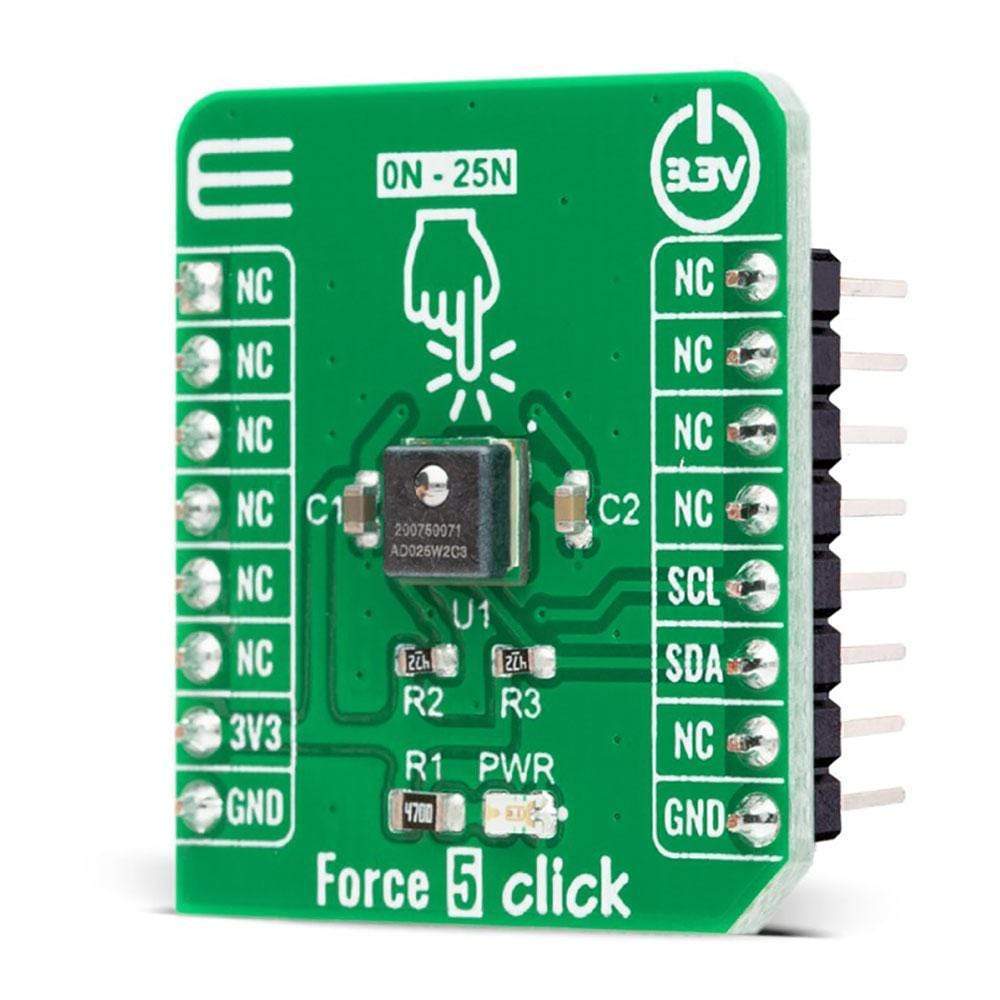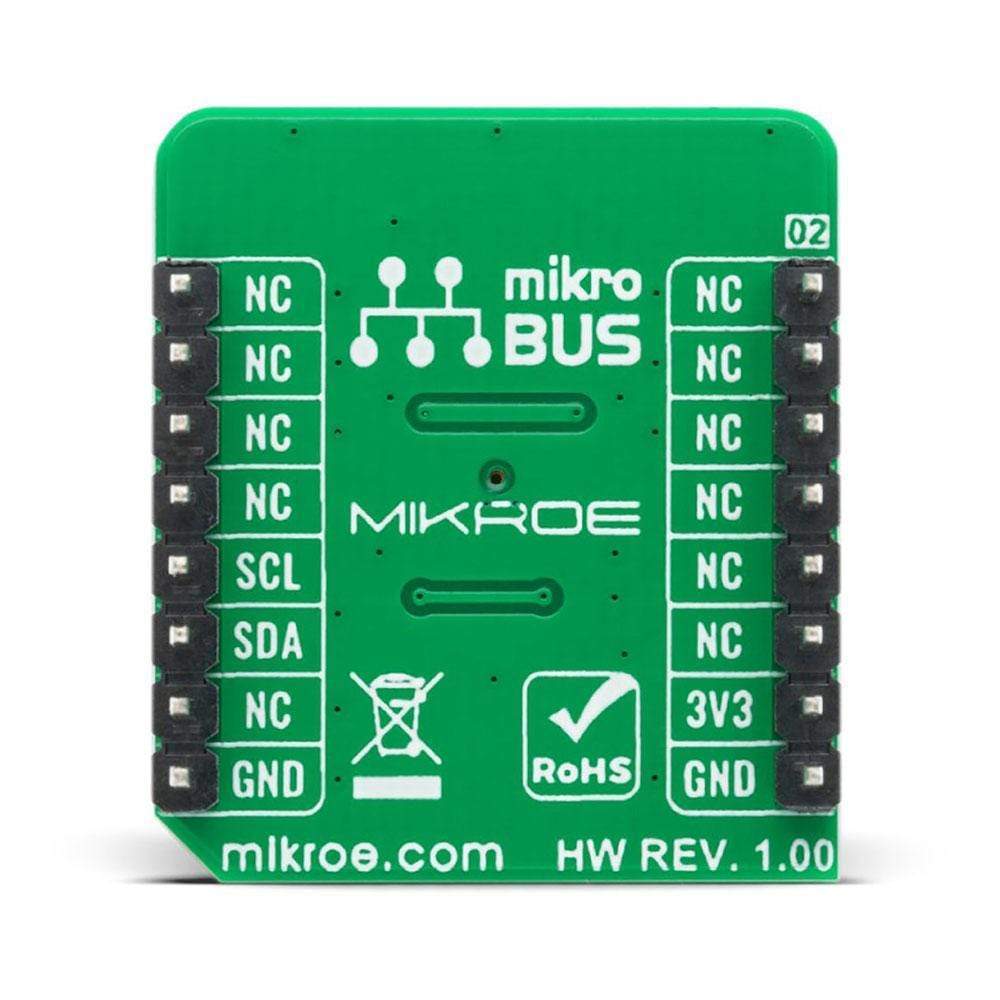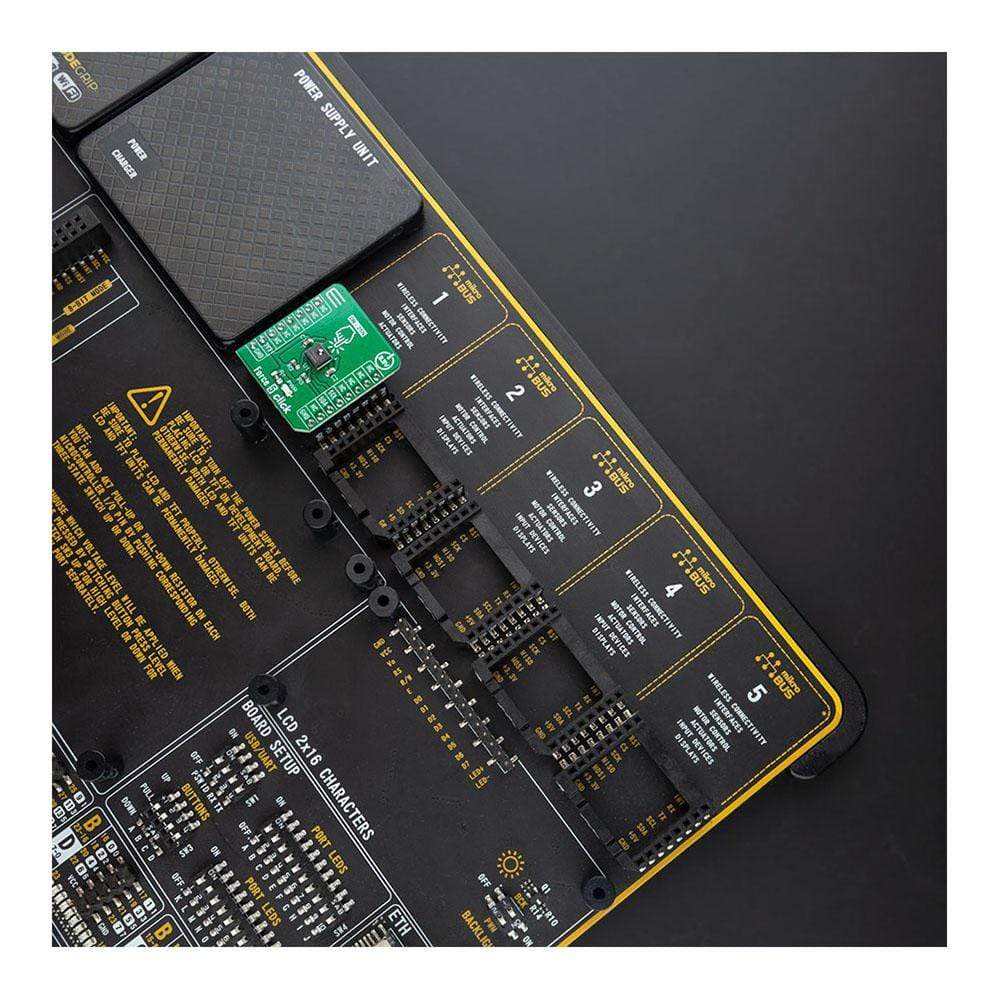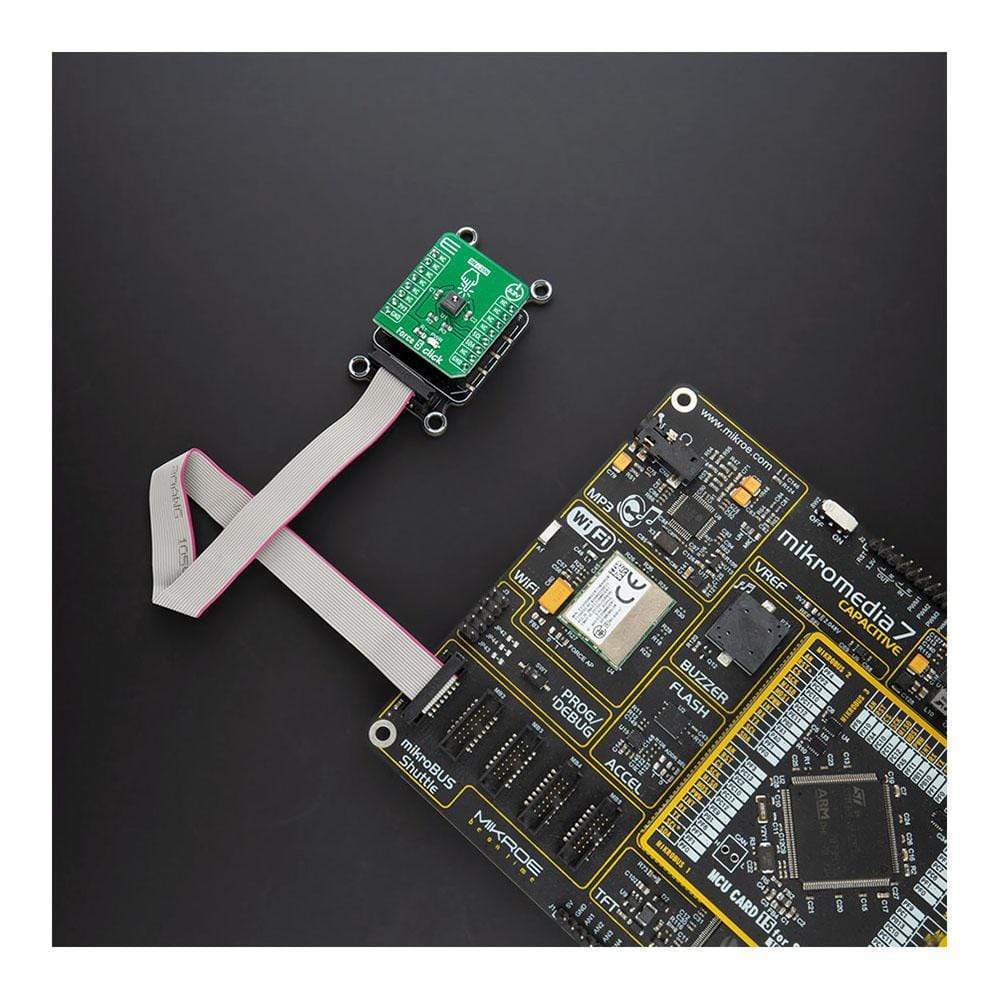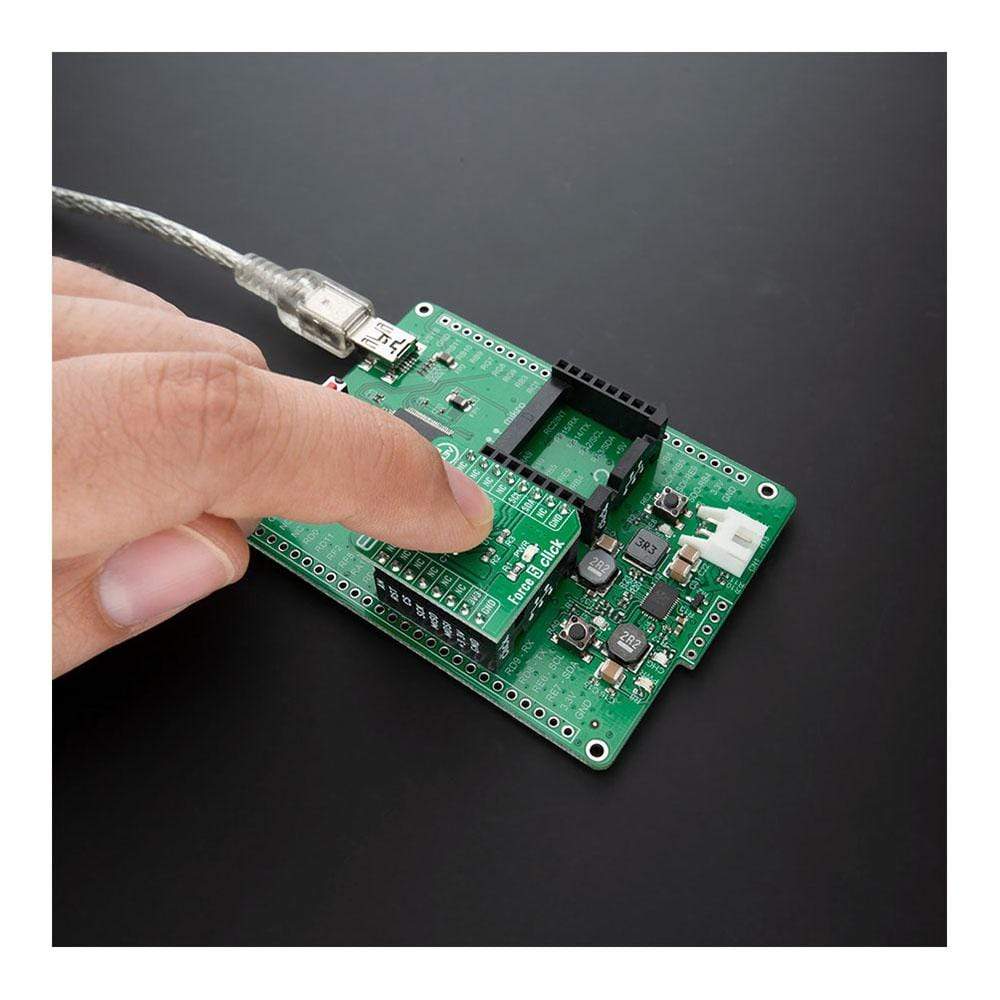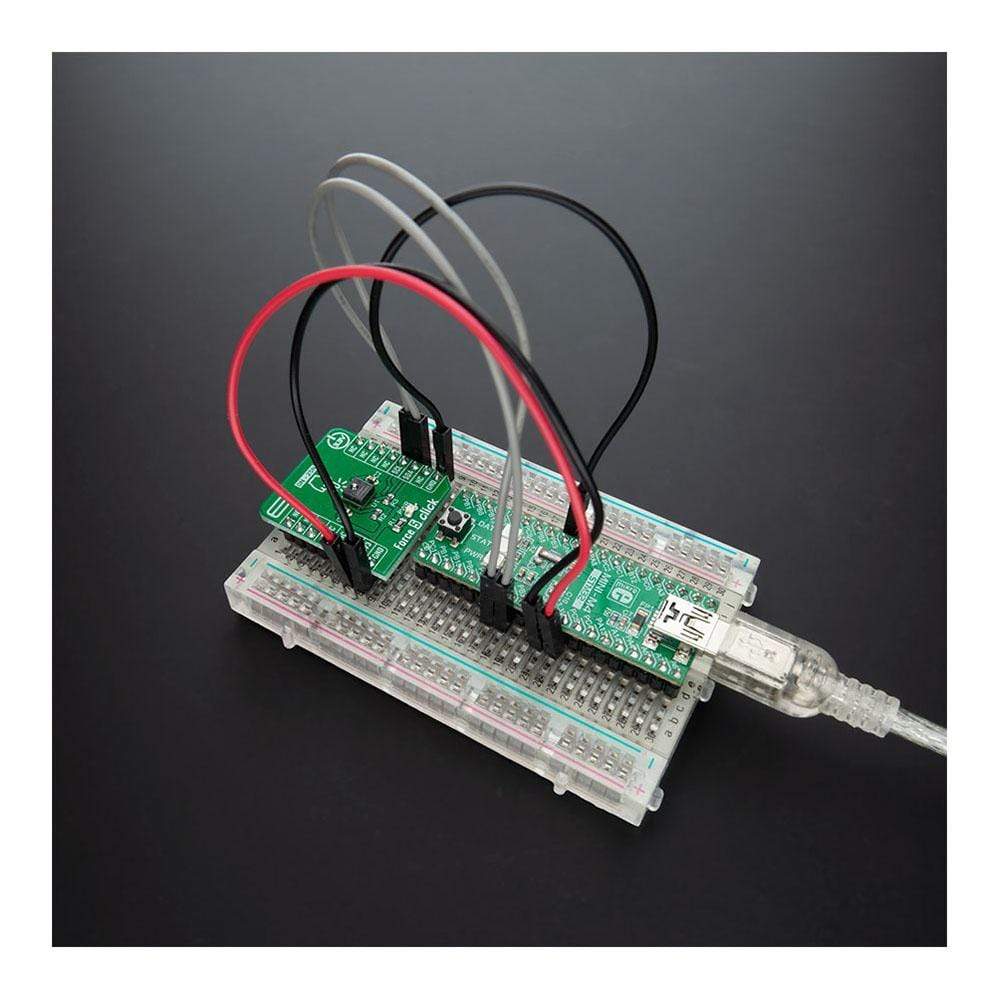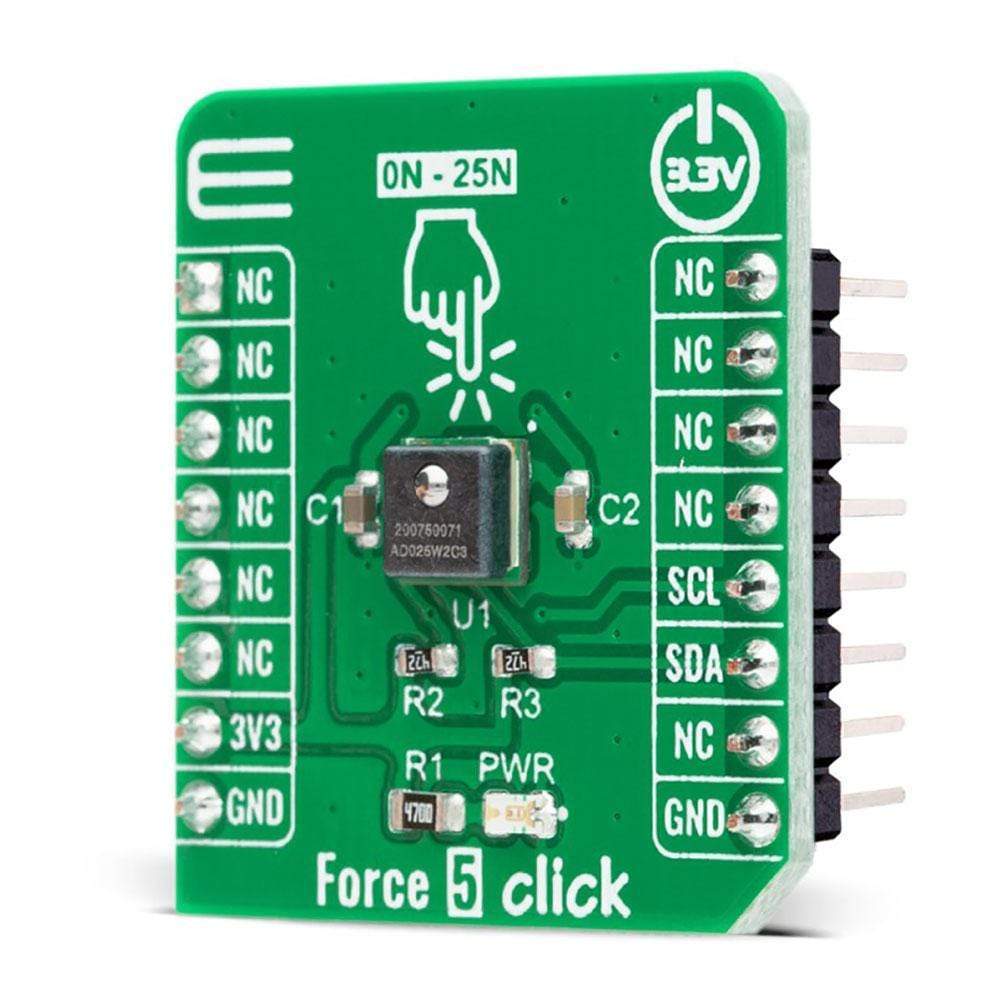
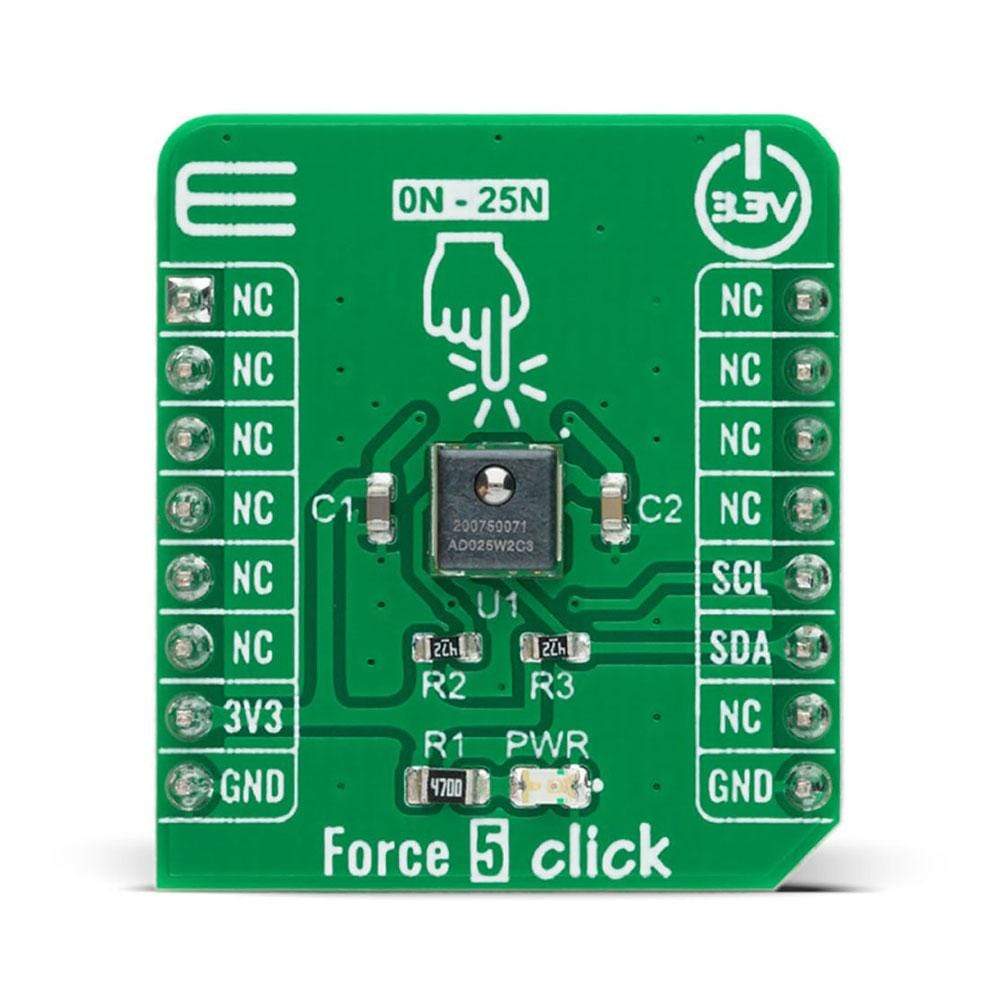
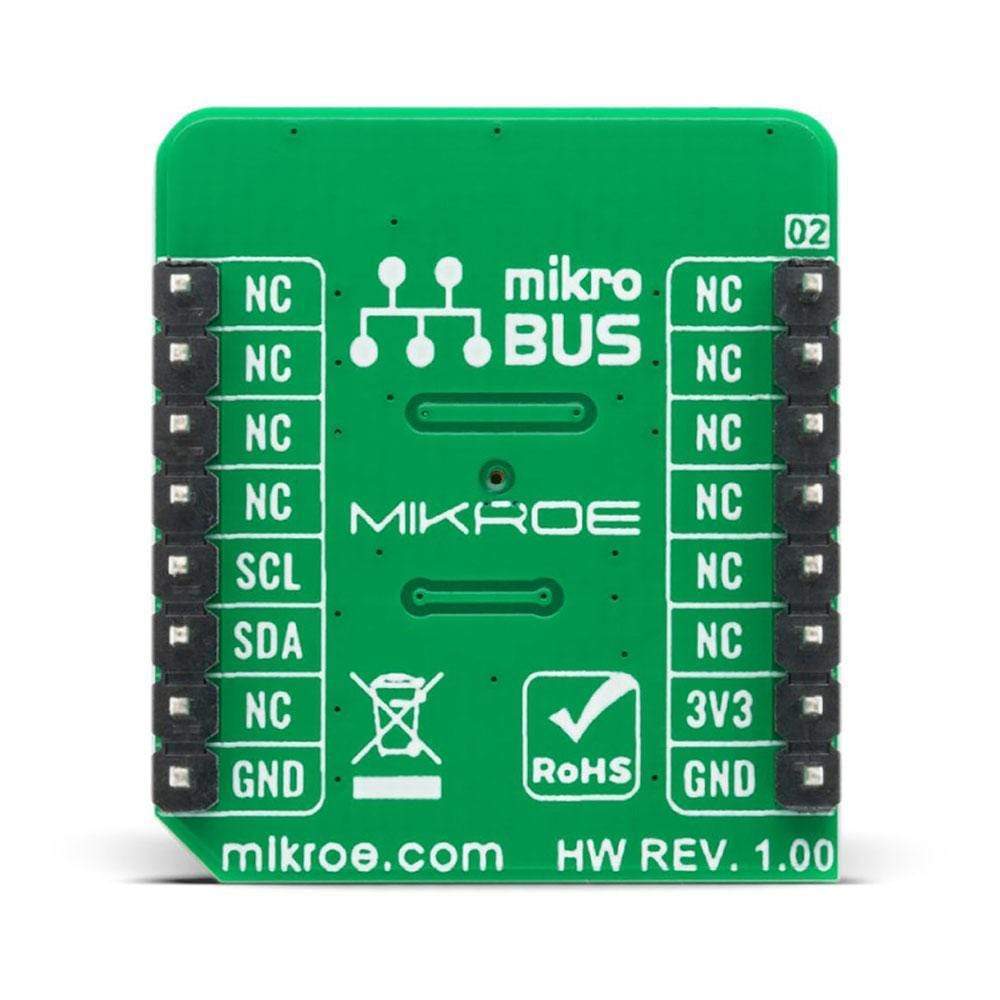
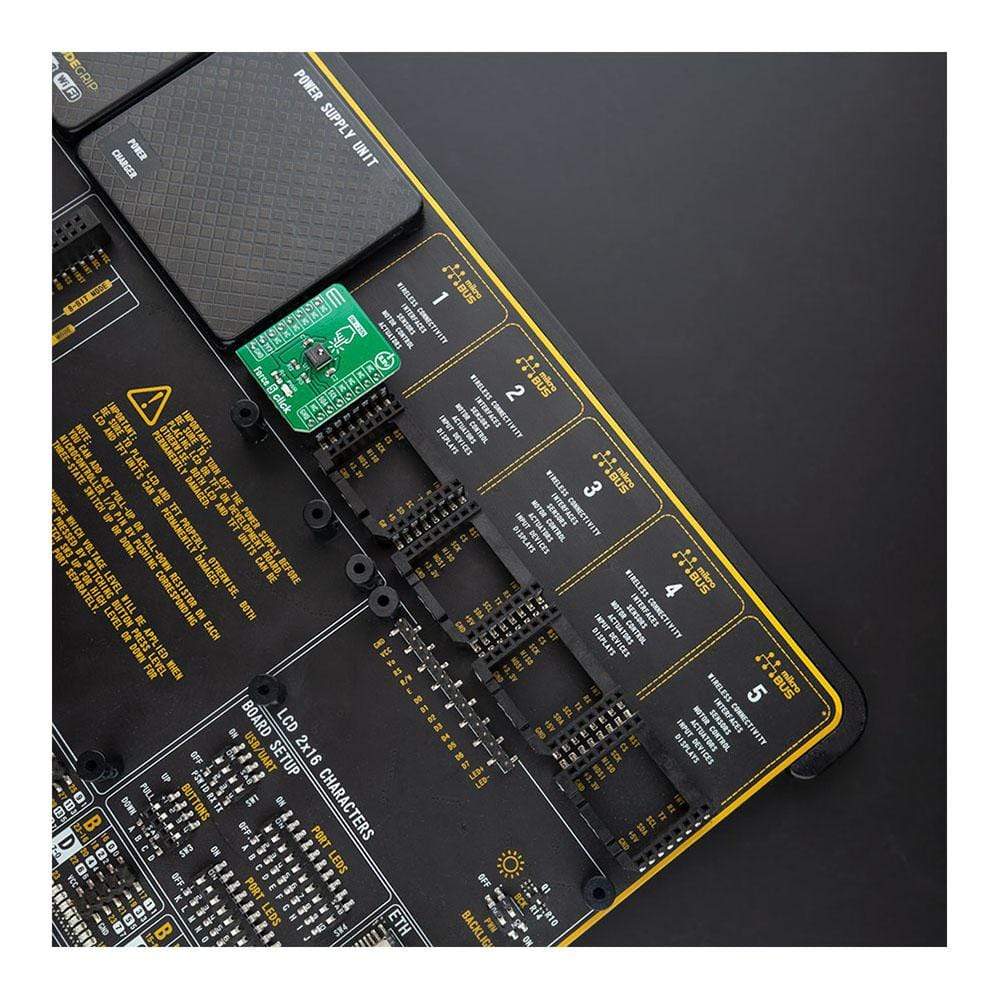
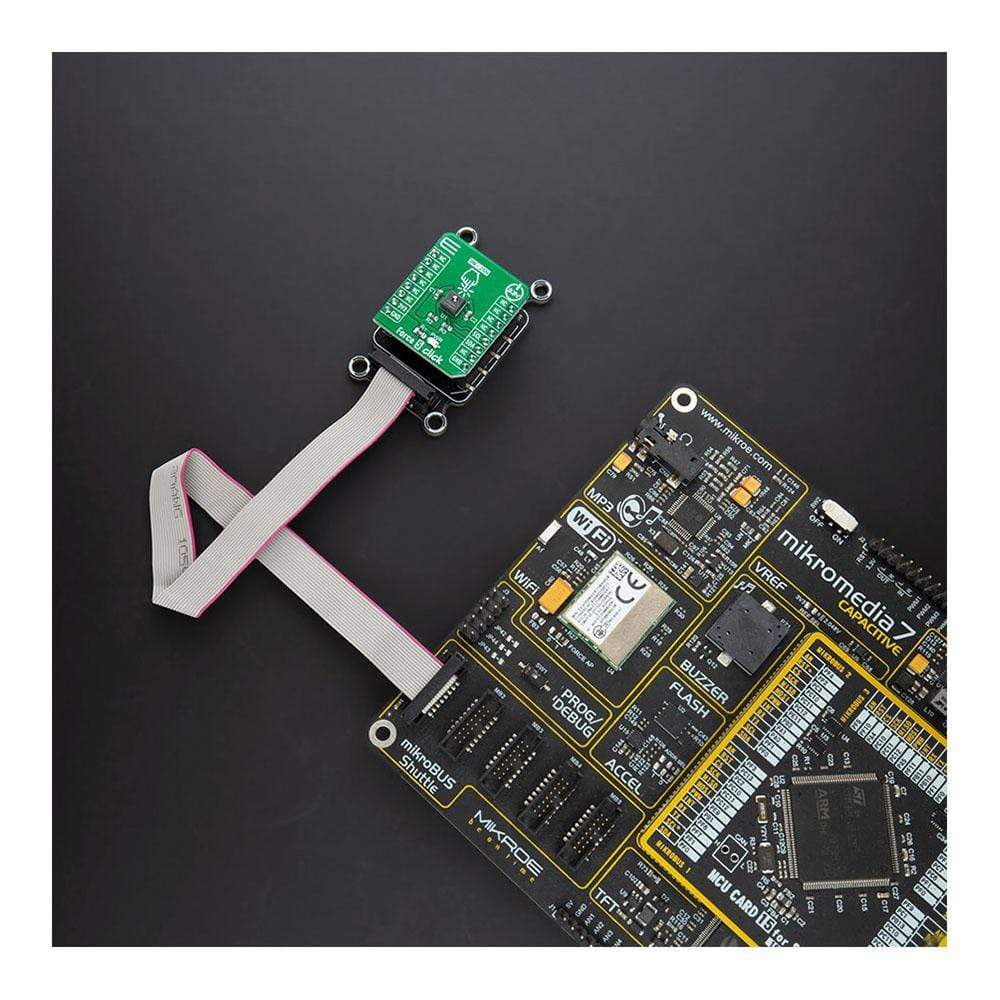
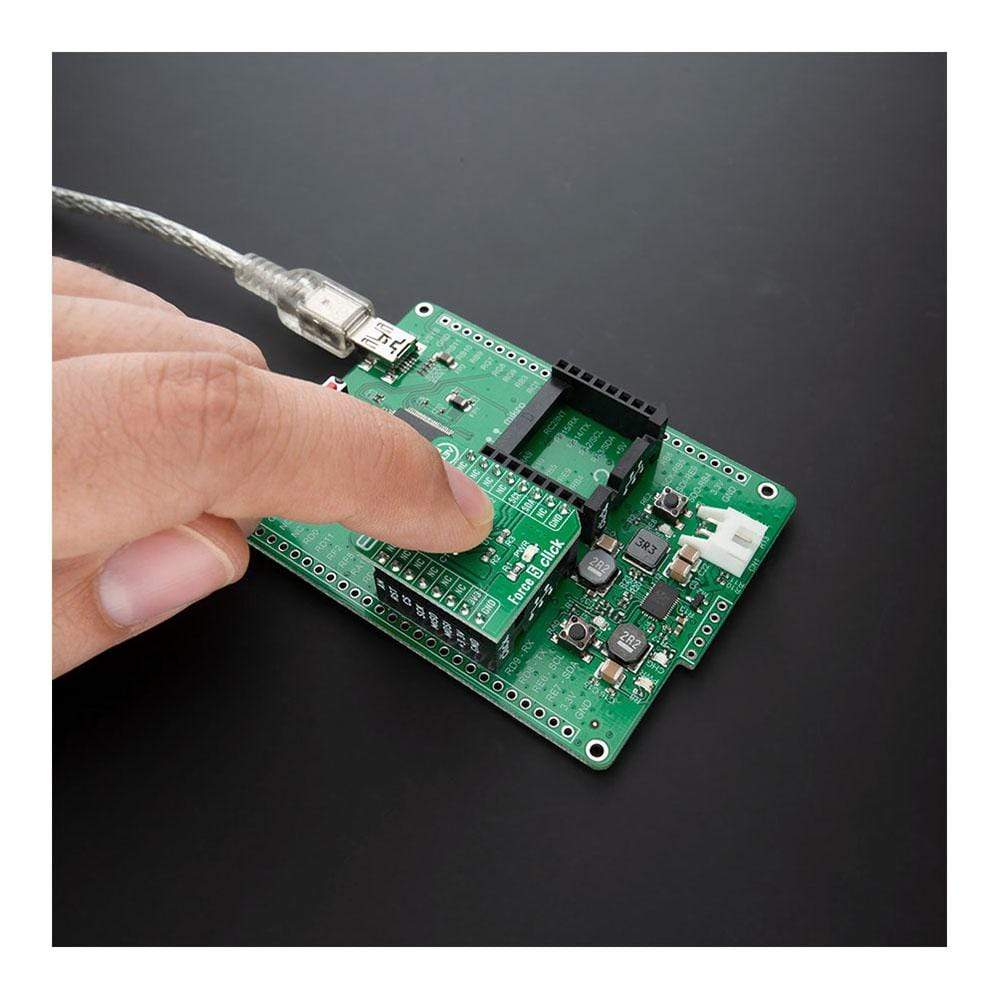
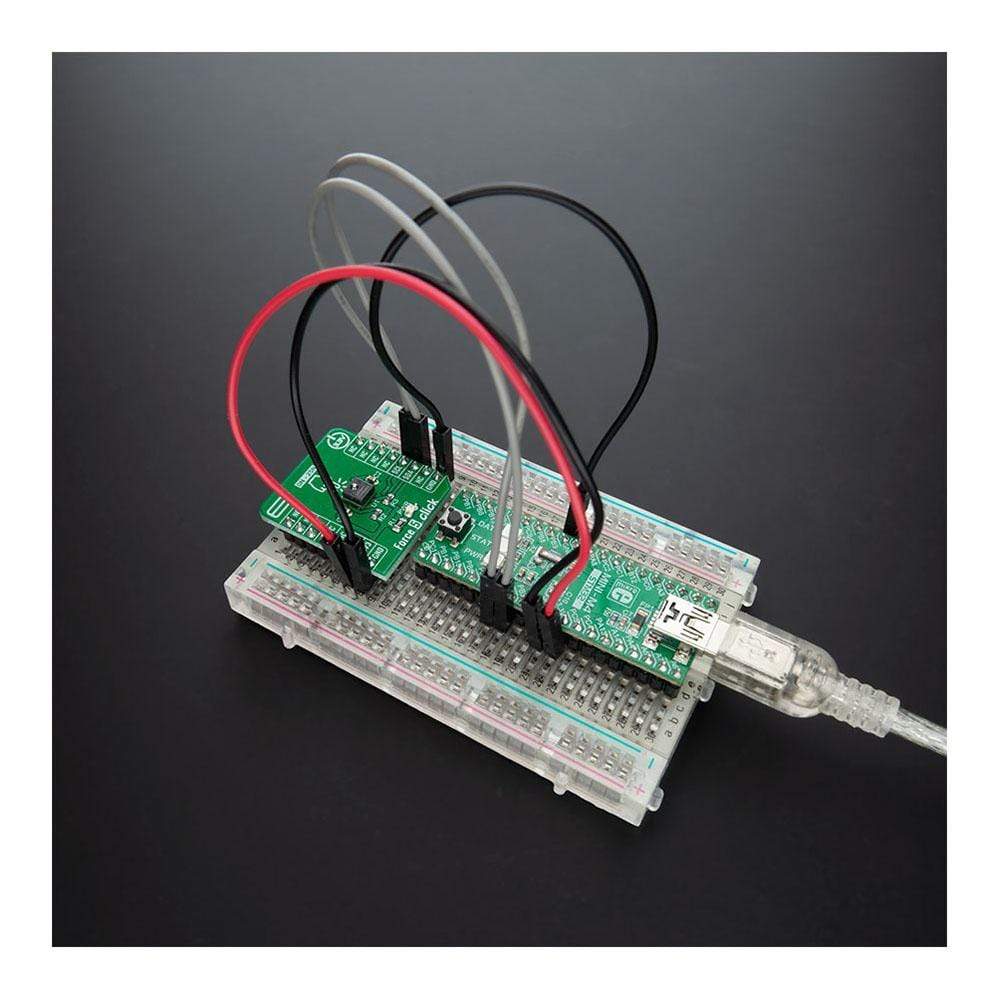
Overview
The Force 5 Click Board™ is a compact add-on board that contains a stable and flexible compensated/amplified micro force sensor. This board features the FMAMSDXX025WC2C3, a piezoresistive-based force sensor offering a digital output for reading force over the specified full-scale force span and a temperature range from Honeywell Sensing and Productivity Solutions. The very stable digital output that is directly proportional to the force applied to the mechanically coupled sphere, enhanced accuracy, and reduced total error band that enhances system performance are just some of the good features that this sensor has. This Click Board™ is suitable for industrial applications such as force/grip measuring equipment, load and compression sensing, robotics, and more.
Force 5 Click is supported by a mikroSDK compliant library, which includes functions that simplify software development. This Click Board™ comes as a fully tested product, ready to be used on a system equipped with the mikroBUS™ socket.
Downloads
Le Force 5 Click Board™ est une carte complémentaire compacte qui contient un micro capteur de force compensé/amplifié stable et flexible. Cette carte comprend le FMAMSDXX025WC2C3, un capteur de force piézorésistif offrant une sortie numérique pour la lecture de la force sur la plage de force à pleine échelle spécifiée et une plage de température de Honeywell Sensing and Productivity Solutions. La sortie numérique très stable qui est directement proportionnelle à la force appliquée à la sphère couplée mécaniquement, la précision améliorée et la bande d'erreur totale réduite qui améliore les performances du système ne sont que quelques-unes des bonnes caractéristiques de ce capteur. Ce Click Board™ convient aux applications industrielles telles que les équipements de mesure de force/adhérence, la détection de charge et de compression, la robotique, etc.
Force 5 Click est pris en charge par une bibliothèque compatible mikroSDK, qui comprend des fonctions qui simplifient le développement logiciel. Cette Click Board™ est un produit entièrement testé, prêt à être utilisé sur un système équipé du socket mikroBUS™.
| General Information | |
|---|---|
Part Number (SKU) |
MIKROE-4305
|
Manufacturer |
|
| Physical and Mechanical | |
Weight |
0.016 kg
|
| Other | |
Country of Origin |
|
HS Code Customs Tariff code
|
|
EAN |
8606027380891
|
Warranty |
|
Frequently Asked Questions
Have a Question?
Be the first to ask a question about this.

